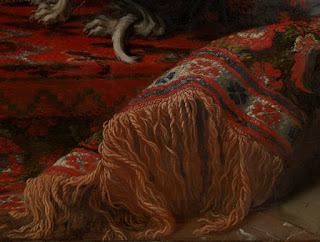I have posted twice now (on October 27 and on June 7) on the response to Goethe: Life as a Work of Art, David Dollenmayer's translation of Safranski's Goethe bio. The most recent person to weigh in is Ferdinand Mount, in a recent issue of The New York Review of Books. Certainly Michael Hoffmann and Daniel Johnson are familiar with German literature (whereas Adam Kirsch's New Yorker review of The Essential Goethe was hardly more than a potted summary of Goethe's life and work), but Mount shows more than a superficial reading of Goethe's work. I would expect nothing less of a former editor of the Times Literary Supplement.
Mount has read earlier biographies, including the two volumes so far by Nicholas Boyle. A comparison with Boyle is always a good place to start, which I also did in my Goethe Yearbook review of the original German edition. In Mount's estimation, Safranski does not "measure up to the depth and subtlety of Boyle’s analysis." In compensation, Safranksi "says certain things plainly that Boyle tends to blur or omits altogether—like the story of Herr Glaser." This is an episode of Goethe's life with which I was unfamiliar and about which Safranski reported. Herr Glaser of Stützerbach was a corpulent merchant who proudly showed off a life-size portrait of himself to the young Carl August and his new privy councilor. When he was out of the room, Goethe cut out Glaser's face from the canvas and stuck his own head in the hole. In the meantime, the duke's other hangers-on were raiding the merchant's wine cellar and rolling the barrels down the hill. Here is the quote in English in Mount's review: “Teased Glaser shamefully. Fantastic fun till 1 am. Slept well.”
Here is Goethe's own diary account of the events of August 31 and September 1, 1777: "nach Tisch ritt mit Lichtenb. auf Stützerbach. war äusserst lustig den Abend. d. 1. den Morgen bis Nachm 3 auf der Jagd. Hesler zu uns nach Tische mit den Bauermaidels getanzt, Glasern sündlich geschunden, ausgelassen toll bis gegen 1 Nachts. Gut geschlafen."
 |
| Glaser House in Stützerbach. Note cellar and hill. |
Perhaps because of those Bauermaidels, Mount is inclined not to take seriously Goethe's sexual innocence before his journey to Rome. Boyle seems to accept the view that Rome was his initiation, while Safranski is silent on the subject. Mount finds the youthful Goethe too "boundless, energetic, uninhibited" to have been buttoned up. He quotes Goethe's boast to his friend Kestner ("Between you and me I know something about girls”), as well as an early letter from Weimar to Frankfurt (“I’m leading a pretty wild life here”).
Mount finds the essential Goethe in the "young Goethe," in the Sturm und Drang Goethe, and is not too enamored of the notion, purveyed by Safranski and others, that Goethe continually "reinvented" himself. Goethe, in his view, was fully formed as a young man, and his later turn to classicism, "toward the erotic," was no more than "pirouettes on the ice." As evidence, he notes that Goethe's late-life infatuations were all with young women, what Mount calls "the throbbings of noontide," which were the reviving of an old self, not the invention of a new one. Thus, Goethe's remarkable poetic facility, from youth to old age, with its "extraordinary combination of movement and musicality, the best of Byron with the best of Tennyson. He is the easiest of poets to remember."
Very interesting observations. I am not sure I agree with Mount, however, when he writes that Goethe's basic outlook was "sunny." This does not comport with Mount's conclusion, which introduces Nietzsche's reverence before Goethe in Twilight of the Idols. (Thus, the image at the top of this post from the New York Review page by the Dutch illustrator Siegfried Woldhek.) For Mount, what Nietzsche is describing is the Superman, one who "acknowledges no external limits on his will, whose actions are self-validating, who is beyond scruples." I don't see the path from the young Goethe to this image of a Goethe, for whom nothing is forbidden but "weakness." Mount seems to have made a giant leap. Although Safranski does not foreground it as such, his biography shows how the "sunniness," the exuberance of Goethe's youth, was killed by life in Weimar. Goethe had to change, if he were to stay there. The result was resignation, renunciation (Entsagung), not a unscrupulous Superman.





















































